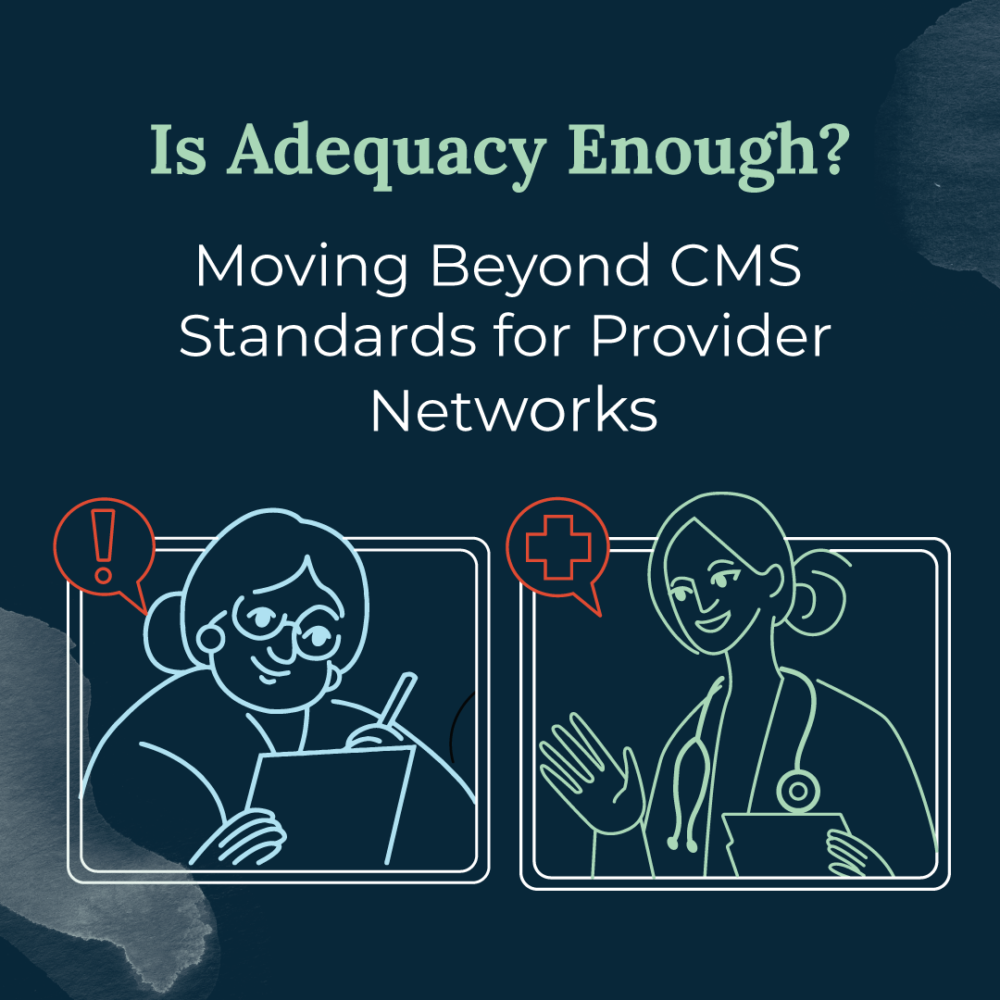Meet Grace
Meet Grace. She’s a 70 year-old immunocompromised woman living in a rural area. She owns a car but doesn’t drive anymore, so she relies on her son for transportation. When she’s able to schedule her medical appointments well in advance, he’s able to take time off to drive her to them.
But what happens when she comes down with the flu?

The realities of “adequate” Medicare Advantage networks
expensive ER visit. Therefore, as is too often the case, Grace goes untreated, leaving her at risk of suffering adverse side effects and an avoidable hospital admission from the flu.
Issues with adequacy are not solely rural
Consider another patient covered under a network devised to comply with CMS adequacy standards: a Medicaid managed care plan. Mary is a 30 year-old woman living in a large metro area. She can’t afford a vehicle, so she relies on public transportation to get around. She can’t afford to take time off of work, since she can barely afford her rent.

One day, Mary catches the flu. According to CMS rules, she should have access to an in-network primary care physician within 10 miles (and 15 minutes’ travel time) of her location. She looks online and finds that although there are several PCPs within the limit, they are no longer participating with her health plan. To avoid paying out-of-network fees, she chooses one that’s further away–just under 10 miles.
Despite the office falling within the adequacy standards for the plan, the bus route she has to take actually travels 14 miles to reach the doctor’s office. Because there is always traffic on weekdays, it takes 45 minutes for her to reach the clinic. (Again, we see the inadequacy of the Haversine “as the crow flies” model of time and distance.) Not only does she need to take time off work to visit the doctor; she also has to take more time to get her prescription filled.
After considering the cost of the appointment, prescription, and missed time at work, she decides to forego treatment, compromising her health.
Patients deserve more than adequate care
In both Grace’s and Mary’s cases, they have healthcare coverage that meets the CMS definition of adequacy, but the realities of their lives–transportation challenges, economic challenges, and the need to weigh immediate costs against long-term health outcomes–result in their not receiving the care they need. Adequacy standards were designed to ensure patients receive quality care, but clearly they have failed in cases like these.
It’s difficult, if not impossible, to assign blame for this problem. Is it Mary or Grace’s fault for not prioritizing their health over shorter-term factors? Is it the health plan’s fault for building networks that meet regulatory standards but nothing more? Or is it CMS’s fault for not creating or updating adequacy standards to reflect patients’ realities?
While health plans can point to CMS as the ultimate cause of the problem, there are real, tangible reasons why they should recognize that adequacy is only a first step on the journey to quality care, not the final destination. To achieve the desired outcome and the intent of adequacy standards–namely ensuring that all individuals have access to affordable, high quality healthcare–the “as the crow flies” standard for adequacy is insufficient. Payors need to build more robust networks that deliver high quality, efficient care by minimizing the impacts of provider crowding and care deserts wherever possible. But how?

Building provider networks that transcend adequacy
Learn more about how to build the next generation of provider networks in this new whitepaper from andros.



